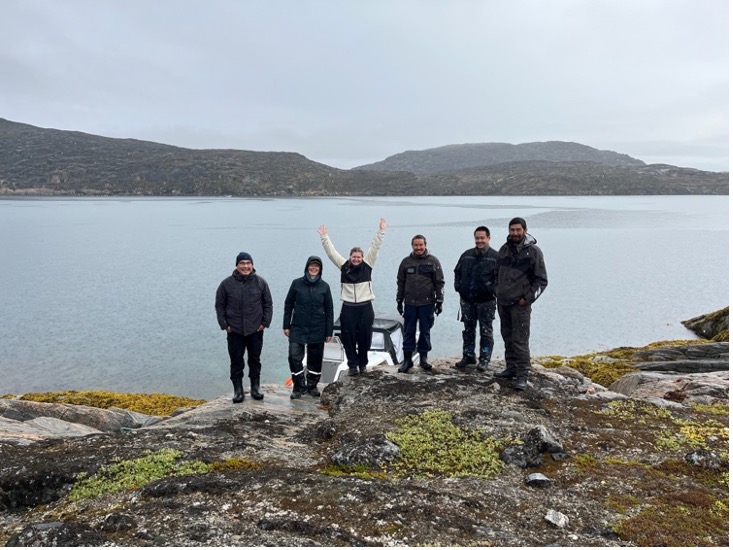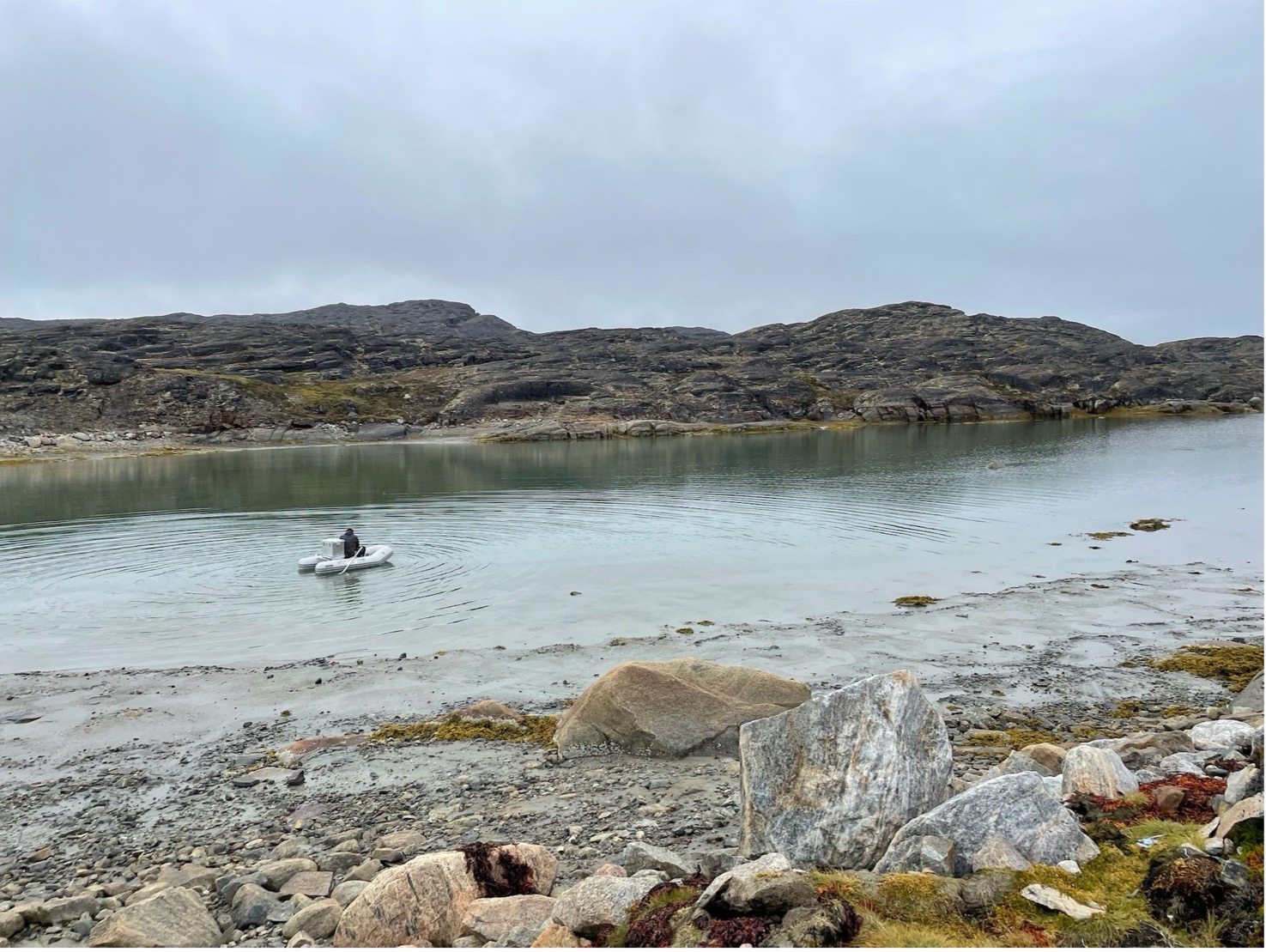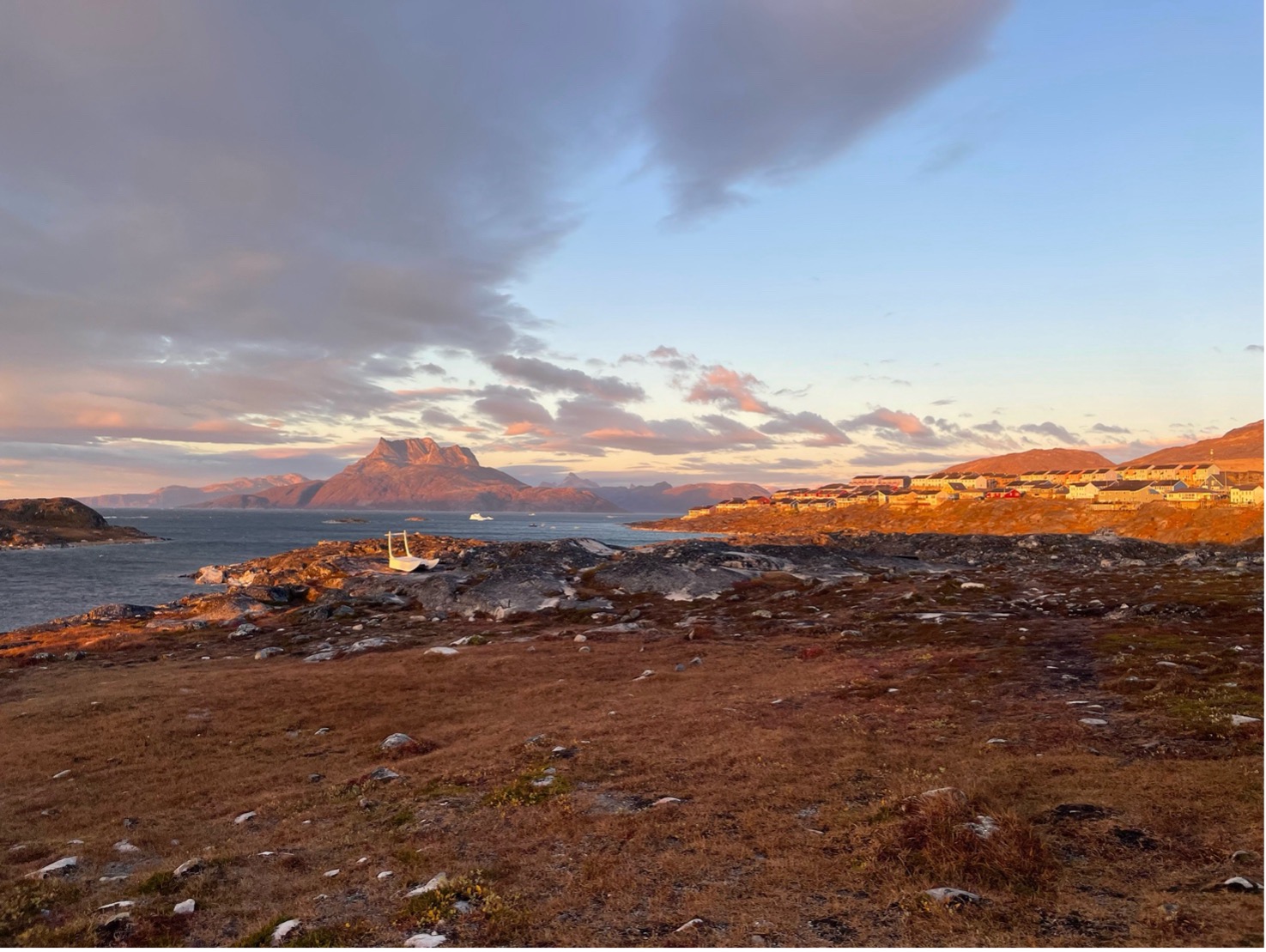The DTU team have been in Greenland again in summer and fall 2025 to study the linkages between permafrost thaw and drinking water quality. The work set out to sample sediment and water from multiple drinking water lakes along a coastal gradient of permafrost from continuous to sporadic. Our expedition spanned five different towns and covered more than 500 km of coastline, and despite the challenges of travelling in the Arctic region, we have returned home with all the samples we had hoped for.

The journey had a rocky start, with flight re-bookings, cancellations, and a front-row seat in the cockpit secured just five minutes before departure. All things you need to account for when travelling in the Arctic.
 |
 |
We collected our 180 kg of gear and equipment in Ilulissat and then travelled by boat in a beautiful sunrise to the small town of Kangaatsiaq, where we spent a week. There we collected samples both in a lake adjacent to town and one 8 km away in the backcountry with great help from the magnificent local water supply team, who provided transport and muscle power to the expedition in addition to sharp observations of permafrost related changes in the local landscape.

The trip then continued to Aasiaat, where we met up with the ILLUQ film crew from GRID-Arendal, who were eager to interview us and document the sampling campaign. They also got a comedic bang for their buck when a lost glove had to be retrieved from the water using a rubber dinghy (which you can see more of on ILLUQs Instagram site).

After successful Aasiaat sampling, we all continued to Sisimiut on a wavy overnight ferry ride, after which the group separated to focus on other tasks. The expedition was then put on hold for a few weeks before continuing from Sisimiut to Nuuk, where another week was spent collecting samples.

All our samples will be analyzed to estimate the impact of climate change on drinking water quality in Greenland. Permafrost thaw, higher temperatures, and more extreme weather could increase the influx of a wide variety of compounds that may negatively affect drinking water quality. Most of the drinking water in Greenland is sourced from surface water, which is inherently more susceptible to environmental changes. We therefore hope that our results will help with future planning for providing drinking water to the more than 70 communities across Greenland.


